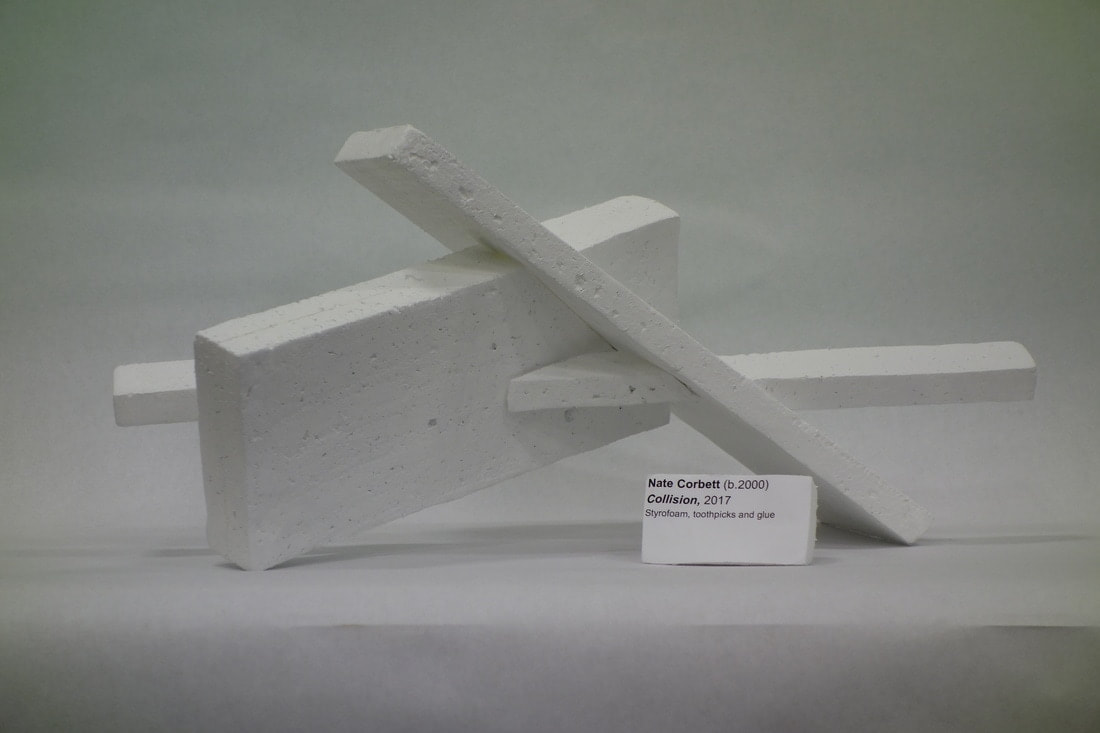3D Design Intersession
After we return from winter break, the students take an elective course called Intersession. This is one class that they attend all day that lasts for 2 weeks. These pass/fail classes are designed by the staff around their interests and hobbies as a way of broadening the students' variety of experiences at High Tech High.
I was able to start a class based around an art class that I took in college and enjoyed greatly. It consists of 3 individual sculpture projects in a variety of materials, exploring different styles of sculpture and 3 dimensional design. I wanted to plan an this mini class on my own, so starting with products that I was familiar with and had made was a great way to kick start the process. I mostly learned about class and project management in this time.
I was able to start a class based around an art class that I took in college and enjoyed greatly. It consists of 3 individual sculpture projects in a variety of materials, exploring different styles of sculpture and 3 dimensional design. I wanted to plan an this mini class on my own, so starting with products that I was familiar with and had made was a great way to kick start the process. I mostly learned about class and project management in this time.
Things That Worked
I made a clear schedule beforehand and had previously done all the work that I was asking the students to do. I felt strongly that if I knew what we were doing and where the project was going, the students would feel free to get lost in the work and be confident that I was giving them enough time. Additionally, being organized gave me some credibility to students who hadn't had me in the past and made management a little easier.
I broke up our work time in the day with peer critiques and presentations about some of my favorite artists. This helped keep us out of the drag of 2-3 hour work times that I have found eat away at student productivity. I can't expect myself to work for hours straight on the same thing, so I didn't ask that of my students.
Repetition of some structured activities was very helpful in this course. Every other day we had a peer critique that I structured fairly rigidly, with assigned roles for facilitator and time keeper. Outsourcing jobs I normally would do in this situation improved buy-in to the process (students held each other accountable for participation) kept me from becoming a hovering rule keeper, and most importantly allowed my to participate in the critiques. This process was utilized in the final critique with professional artists. Because by that time the students were so familiar with it it was extremely easy to manage and I was able to enjoy participating.
I broke up our work time in the day with peer critiques and presentations about some of my favorite artists. This helped keep us out of the drag of 2-3 hour work times that I have found eat away at student productivity. I can't expect myself to work for hours straight on the same thing, so I didn't ask that of my students.
Repetition of some structured activities was very helpful in this course. Every other day we had a peer critique that I structured fairly rigidly, with assigned roles for facilitator and time keeper. Outsourcing jobs I normally would do in this situation improved buy-in to the process (students held each other accountable for participation) kept me from becoming a hovering rule keeper, and most importantly allowed my to participate in the critiques. This process was utilized in the final critique with professional artists. Because by that time the students were so familiar with it it was extremely easy to manage and I was able to enjoy participating.
Surprises
When I planned on doing art history presentations, I expected the students to see them as context for the type of art that we were doing. I didn't think that some students would find them as interesting as they did.
Each piece was based off of an existing artists style, so after the kids started working on one of the sculptures, I would introduce that artists style to help them see examples. These 20 minute slideshows and discussions were noted as highlights by some students. At a project based learning school its easy to stigmatize any kind of lecturing or straight information delivery. This experience made me realize that a balance can be struck.
Each piece was based off of an existing artists style, so after the kids started working on one of the sculptures, I would introduce that artists style to help them see examples. These 20 minute slideshows and discussions were noted as highlights by some students. At a project based learning school its easy to stigmatize any kind of lecturing or straight information delivery. This experience made me realize that a balance can be struck.
Things I Won't Do Again
I posted a progress chart in the back of the room with student code names listed next to the checkpoints in each project. I intended for this to be a good reminder of progress and organizational piece for me, but it wasn't very effective. Students became too interested in who was who and who was finished with what. In the end I kept the same chart as a Google Sheets table and would refer to it one-on-one with the students. I think that the progress chart poster would be helpful as a reflection of an entire class, but was too focused as a student to student list.

